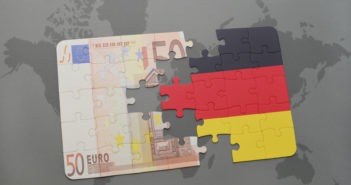Markit releases its forward-looking Purchasing Managers’ Indices for Germany on Thursday, April 18th, at 7:30 GMT. The 500-strong survey of around purchasing managers asks them to assess their forecasts for the future. A score above 50 represents expansion while numbers below 50 foresee contraction. The PMI is usually well-correlated to economic activity and lead hard data.
Germany is considered the “locomotive of Europe” thanks to its export-oriented manufacturing sector. The engine has been stuttering of late. Weaker exports to China, a retooling in the automotive industry to accommodate for new emissions standards, and other factors were behind the dip below 50 points.
And while the sub-50 score was not surprising, the fall in March from 47.6 to 44.1 (according to the final read) was already a shocker. It showed that the list of temporary factors turned into a slowdown. The German government was forced to cut its GDP growth forecast for the whole of 2019 from 1% to 0.5% after it had already slashed it from 1.8% to 1%.
Expectations and EUR/USD reactions
A small bounce to 45 points is now expected in the preliminary report for April, still pointing to deep issues in German industry. The market will probably like to see a more significant improvement, especially after the German ZEW Economic Sentiment beat expectations and turned positive in April with 3.1 points.
The data is, therefore, of high significance. A level closer to 50 will indicate a substantial correction, even if the number still reflects contraction. In this case, of a score of 47 or higher, EUR/USD has room to the upside.
However, even in the all-important PMI meets expectations, the common currency could come under renewed pressure. It may get worse if it misses expectations and does not recapture 45.
It is important to note that the German economy, as a whole, is still doing well. The Services PMI stood at 55.4 points in March, representing satisfactory growth. A minor dip to 55.1 points is on the cards now.
Nevertheless, Germany is a manufacturing country, and this sector is more important. And as a substantial chunk of the manufactured goods is exported, a drop in output means a reduction in the overall euro-zone trade balance surplus.
The euro area’s surplus keeps the currency bid in quiet times and somewhat balances the divergence in monetary policies between the US and the euro-zone.
Conclusion
German Manufacturing PMI is projected to rise from the lows, but only a substantial jump could cheer the euro. The release is set to have more impact than usual due to the nasty fall last time.
Get the 5 most predictable currency pairs
EUR/USD fears another devastating German PMI
